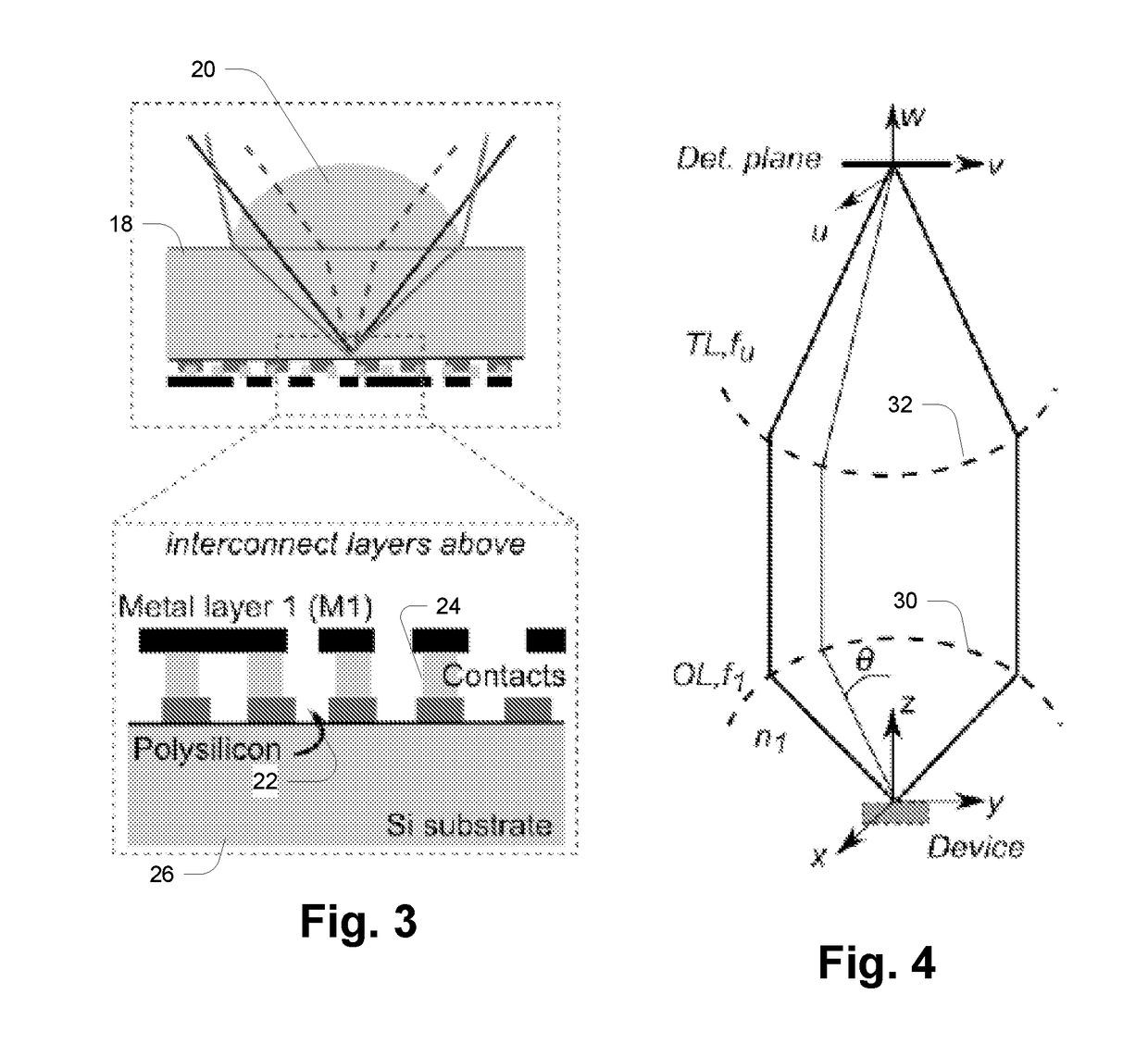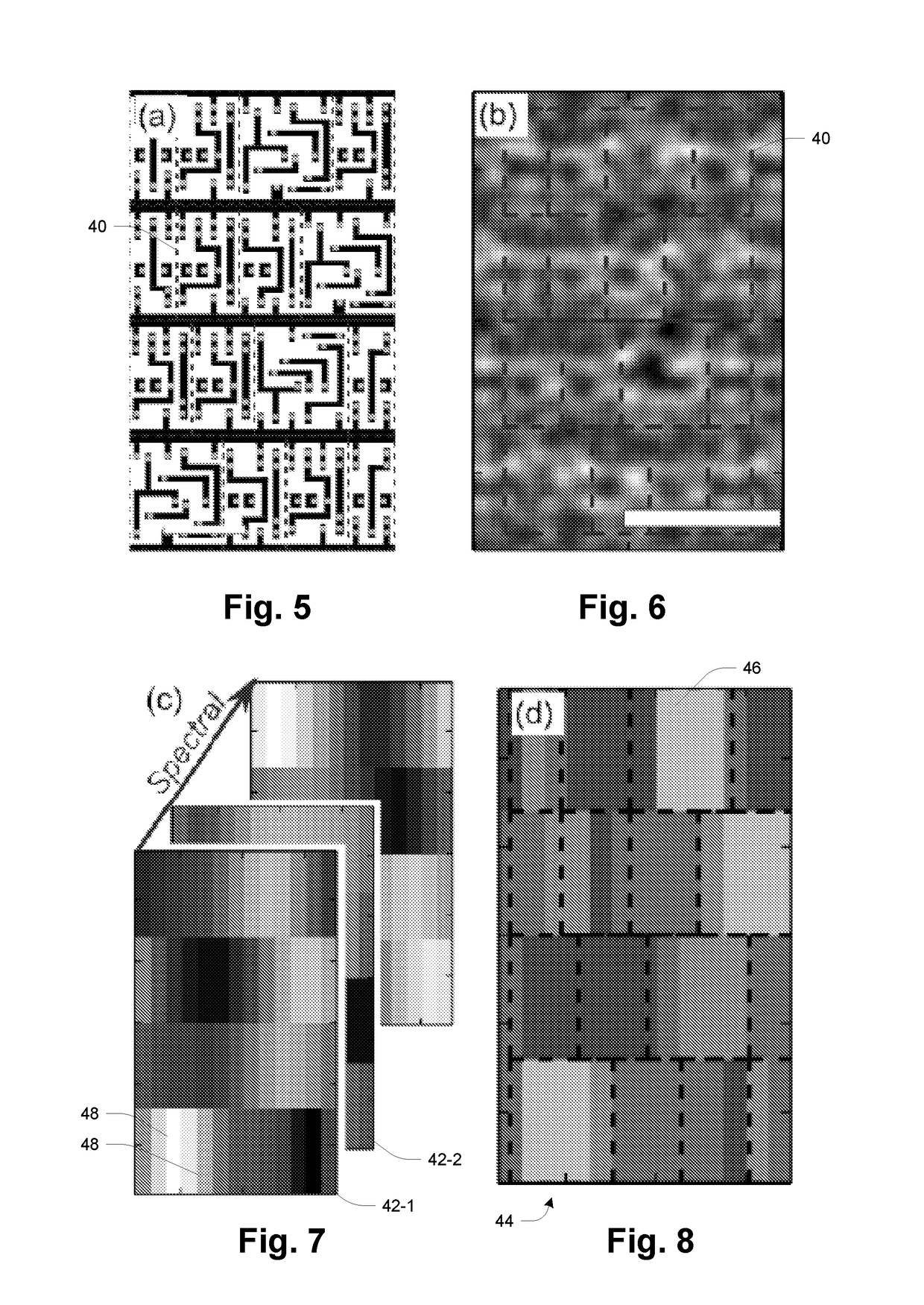Gate-level mapping of integrated circuits using multi-spectral imaging
- Summary
- Abstract
- Description
- Claims
- Application Information
AI Technical Summary
Benefits of technology
Problems solved by technology
Method used
Image
Examples
Embodiment Construction
[0039]FIG. 1 shows a testing system 10 including a controller 12, optical subsystem 14, and image processor 16. Under control of the controller 12, the optical subsystem directs optical illumination to an integrated circuit (IC) under test 18 and receives reflected optical energy in response. As described more below, the test system 10 uses a “multi-spectral” approach in which images are obtained from the IC under test 18 for different optical excitations, e.g., illumination at different wavelengths, polarizations, etc. For each optical excitation, the pattern of reflected optical energy is scanned and converted into an electronic representation of a corresponding image of the IC under test 18. These images are processed by the image processor 16, under control of the controller 12, to construct a representation the layout of the IC under test 18.
[0040]FIG. 2 describes aspects of operation, namely optical verification testing of a portion of an IC (e.g., IC under test 18). At 50, th...
PUM
 Login to View More
Login to View More Abstract
Description
Claims
Application Information
 Login to View More
Login to View More - R&D
- Intellectual Property
- Life Sciences
- Materials
- Tech Scout
- Unparalleled Data Quality
- Higher Quality Content
- 60% Fewer Hallucinations
Browse by: Latest US Patents, China's latest patents, Technical Efficacy Thesaurus, Application Domain, Technology Topic, Popular Technical Reports.
© 2025 PatSnap. All rights reserved.Legal|Privacy policy|Modern Slavery Act Transparency Statement|Sitemap|About US| Contact US: help@patsnap.com



